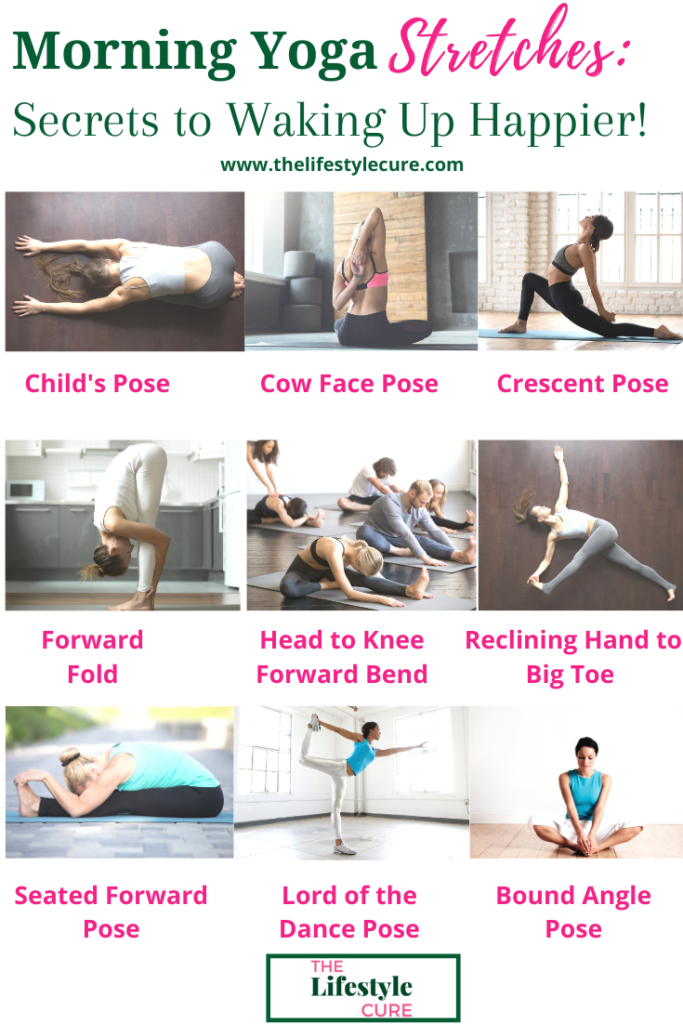
A backbend is one of the best yoga poses for back pain. This pose stretches the back and strengthens the surrounding muscles. This pose can also be helpful in relieving lower back pain by strengthening the muscles around the spine. It improves blood circulation, which brings nutrients and healing to the spinal column. It can be used by those who have back pain to prevent more problems. This pose is popular for those who want to reduce their symptoms.
Shoulder stand is a great way to release tension in the hips and back. To do this, raise your upper body slightly and keep your pelvis straight. While performing this pose, make sure to bend your elbows slightly. For 20-30 seconds, hold the pose. This should be repeated four to five time for the best results. Try it to relieve your back pain and improve your overall health. If you are suffering from severe pain, stiffness, or other symptoms, it is important to seek medical attention.
Sitting leg pose can help with back pain caused by tight muscles. This position will help stretch the hips, lower back, and hips. For a deeper version of this pose, grab the soles of the right feet and cross them over the right knee. As many times as you like. It is a great way to relieve back pain. This will help to release tight muscles in your lower back and hips.

You must extend your back fully when you are facing upwards. Because you must fully extend your back, this pose may be beneficial for those suffering from back pain. The stretch of the sacrum muscles and iliopsoas muscle can relieve back pain. You can also try a seated forward bent if you want to find a yoga pose that supports your back. You can also try the standing version of the twist dog if you aren't flexible enough.
Another seated backbend pose is a great choice for back pain. This pose can be used to stretch your upper back, improve spinal mobility, and help you get rid of pain. In this pose, you place your knees on the floor and lift your head and arms to the side. Stretch your chest and back. After you have done this, your hands can be moved towards the legs and thighs. Then, sit up.
Two-knee spine twist is an excellent pose to relieve back pain. It can be used to relieve back stiffness and improve your posture. You can do it every day and it can help relieve back pain. While it can help relax your body, it is also important that you listen to your body so that it can give you the best advice to keep your body mobile.
The seated backbend can be a good choice for those who have back pain. It strengthens the core, and opens up the hips. It is also great for relieving tension and stress. You can do it up to 15 minutes at once. It is like any other yoga pose: the more you practice it the more it will benefit. It is important to choose the right posture. If you don't feel comfortable doing this pose, you can stop practicing it immediately and try another one.

Plank pose is an excellent option for people with back pain. It strengthens your lower back and strengthens your legs. It is also a great transition between other yoga poses. It is important to remember to be gentle and safe when practicing yoga poses. Keep calm and don't push yourself too hard. Listen to your body. If you have back pain, do them slowly and avoid straining it.
Another pose that can help with back pain is the chair pose. This pose opens the chest and stretches the upper back. It improves posture and lessens back pain. Keep your lower legs straight and your arms crossed while you do this pose. You should also relax your lower back towards the floor. Allow the tension to melt and then relax into the floor. You should be able reach all levels of your spine in this position.
FAQ
Is Cardio Exercise Good Or Bad For Your Health?
Cardiovascular exercise is a great way to improve your cardiovascular health. It improves blood flow, strengthens your heart muscle and increases stamina.
Cardiovascular exercise includes running, biking, hiking, swimming, tennis, basketball, soccer, volleyball, football, etc.
It is important to remember that cardio exercises should not be performed at high-intensity levels. This could cause injury.
Only do the cardio exercise when you are feeling good.
Do not push yourself to the limit. If you do, you might injure your self.
Begin by warming up before engaging in cardio exercise. Start slowly increasing your intensity.
Listen to your body. If you feel pain while performing cardiovascular exercise, it is important to stop immediately.
After a cardio workout, it is a good idea to take a break. This allows your muscles to recuperate.
Cardiovascular exercise can help you lose weight.
It is the most effective way to burn calories and reduce belly fat.
How many times per week do I need to exercise?
It all depends on how much time and what kind of exercise you like. A general guideline would be moderate-intensity aerobic exercise 3 - 5 days a week. It's important that you don't overdo it. For maximum results, consistent exercise is key to getting the most out of your workouts.
What exercises are the best?
It all depends on what type of fitness goals you have. Some people prefer endurance sports like swimming, cycling, or running. Others love lifting weights or using resistance bars. There are so many different types of exercise programs available today. Find the best option for you.
What is the best way lose weight?
It's not easy to lose weight. Many people give-up easily because they don’t have the right information.
You can lose weight by following a few simple steps.
First, you must ensure you eat fewer calories than you burn. You will gain weight if you eat more calories than you burn.
You should also exercise regularly in order to lose all those calories. You can choose from a variety of exercises such as walking, biking or dancing.
Third, stop smoking cigarettes or drinking alcohol. These habits make it more likely that you will consume more calories than you would normally.
Fourth, cut down on junk food and fatty foods. These can be replaced with healthier options like fruits, vegetables and whole grains.
Fifth, you must change your lifestyle and adopt new habits. For example, you may need to get up early every morning to exercise before work.
Sixth, be disciplined and stick to your diet plan.
For those extra calories, you could join a class or go to a gym.
You'll quickly start to notice results if you follow these simple tips.
Is Cardio Better Than Strength Training?
Both are equally excellent. However, cardio is more effective if you're looking to bulk up faster.
Cardio burns more calories per minute than strength training and burns more fat.
Although strength training can increase muscle mass, it is more difficult than cardio to do so.
How To Lose Belly Fat Fast
There are several methods to rapidly reduce belly fat. One way to reduce belly fat fast is to eat less food, and drink lots of fluids.
A second way to boost your metabolism is by running and swimming.
You should avoid sitting for too long if you want to quickly lose belly fat. Stand up often throughout the day. This will help you lose more calories.
If you are having trouble losing belly weight despite trying all of these methods, there is another way.
This involves using a device called a belt. The belt works by tightening around your waist when you sit down.
You will feel more comfortable and be able to move around. This will make you lose more calories and help you reduce your belly fat.
How quickly can I transform my body?
Your mindset must be changed. The first step is to decide to change.
Once you have decided that you want to change, then you need to commit yourself to work on your fitness goals for at least 3 months.
You will then need to choose a program that is compatible with your lifestyle.
It is important to have realistic expectations. If you are unwilling to put in the time and effort necessary to achieve your goal, don't waste your money on a gym membership.
Instead, spend your free time exercising outdoors.
Walk around your block for an hour every day to burn calories and help you lose 1 lb per month.
Now that you are clear about what you want to do, plan how you will organise your life around this plan.
This includes making sure that you schedule a time to work out every morning before leaving for work and take breaks throughout the day to move.
Reward yourself for reaching milestones. This could include buying clothes or accessories that reflect your success.
Statistics
- By John Thompson Take a whopping 38% off a set of PowerBlock Pros. (menshealth.com)
- Are You One of the 20% of Guys (mh.co.za)
- Cardmembers earn 5% Back at Amazon.com with a Prime Credit Card. (amazon.com)
- An estimated calorie range for moderately active adult males falls between 2,200 to 2,800 calories per day, depending on age. (eatright.org)
- Get free shipping and 25% off today. (healthline.com)
External Links
How To
What nutrients is a man supposed to consume daily?
Men require daily nutrition for healthy growth and development. The body requires vitamins and minerals, protein, carbohydrates, fats (fats), water, fiber, as well other essential elements.
The male body also requires specific nutrients at different times throughout the day. For example, when you sleep, your body uses energy from food to make hormones, antibodies, and enzymes. You use protein to build muscles and repair damaged tissue when you wake up.
Your body will burn fat at night and store the extra energy as a form of glycogen. Your body still requires sufficient nutrients and calories even though it needs less calories. If you feel hungry, you may consider having a snack during the evening.
Working out requires adequate carbohydrate and protein intake. If you train hard, you may experience muscle soreness after exercising.
You must ingest carbs and protein within two hours of training to prevent this. Your body will breakdown stored glycogen and provide you with glucose for energy.
Also, protein must be consumed immediately after your workouts. This prevents the breakdown of muscle tissue that occurs while you sleep.
Your body produces lactic acid during high levels of physical activity. The body produces lactic acid when there is too much activity. This can cause fatigue. This can be avoided by eating foods high in carbohydrates like fruits and vegetables.
Carbohydrates are a good source of energy to help you recover from hard exercise.
A healthy diet should include lean meats such as fish, eggs and milk, cheese, yogurts, beans, seeds, nuts, and beans.
All these foods are high-quality sources of protein. Protein helps to repair and grow muscles. Protein is also necessary for the production of sex hormones such as testosterone.
To maintain healthy skin, hair, and joints, you also need sufficient dietary fats. Healthy men should consume between 20% to 35% of their daily caloric intake from fat.
Fat helps keep your heart strong and protects against cancer. Your brain also functions properly thanks to fat.
Vegetable oils, such as olive oil, sunflower oil or corn oil, soybean oil and peanut oil, can supply most of the fats you require.
These oils have high amounts of monounsaturated oil fatty acids, (MUFAs). MUFAs reduce cholesterol and inflammation. They protect your cells against free radical damage.
Saturated fats (SFAs) are found mostly in animal products like meat, dairy products, and butter. SFAs can raise LDL ("bad") cholesterol levels and increase triglycerides. They can also increase weight and reduce belly fat.
Polyunsaturated oils (PUFAs), are found in plant-based foods like nuts, seeds and vegetable oils. PUFAs improve cardiovascular function and decrease inflammation. They are also good for controlling blood sugar and cholesterol.
Erectile dysfunction can often be a problem for men who have low HDL ("good") levels of cholesterol. The consumption of saturated fats raises bad cholesterol which in turn lowers good cholesterol.
Because of the high levels of nitrates in red meat and pork, men with prostate problems may eat more of them. Nitrites convert to nitrosamines when cooked at high temperatures. These compounds can lead to cancer.
Nitrites and other harmful chemicals are common in processed meats. These chemicals should be avoided.
According to the American Heart Association, you should limit your consumption of red meat to no more that 2 meals per week. Instead, choose poultry or fish, beans, tofu and whole grain bread.